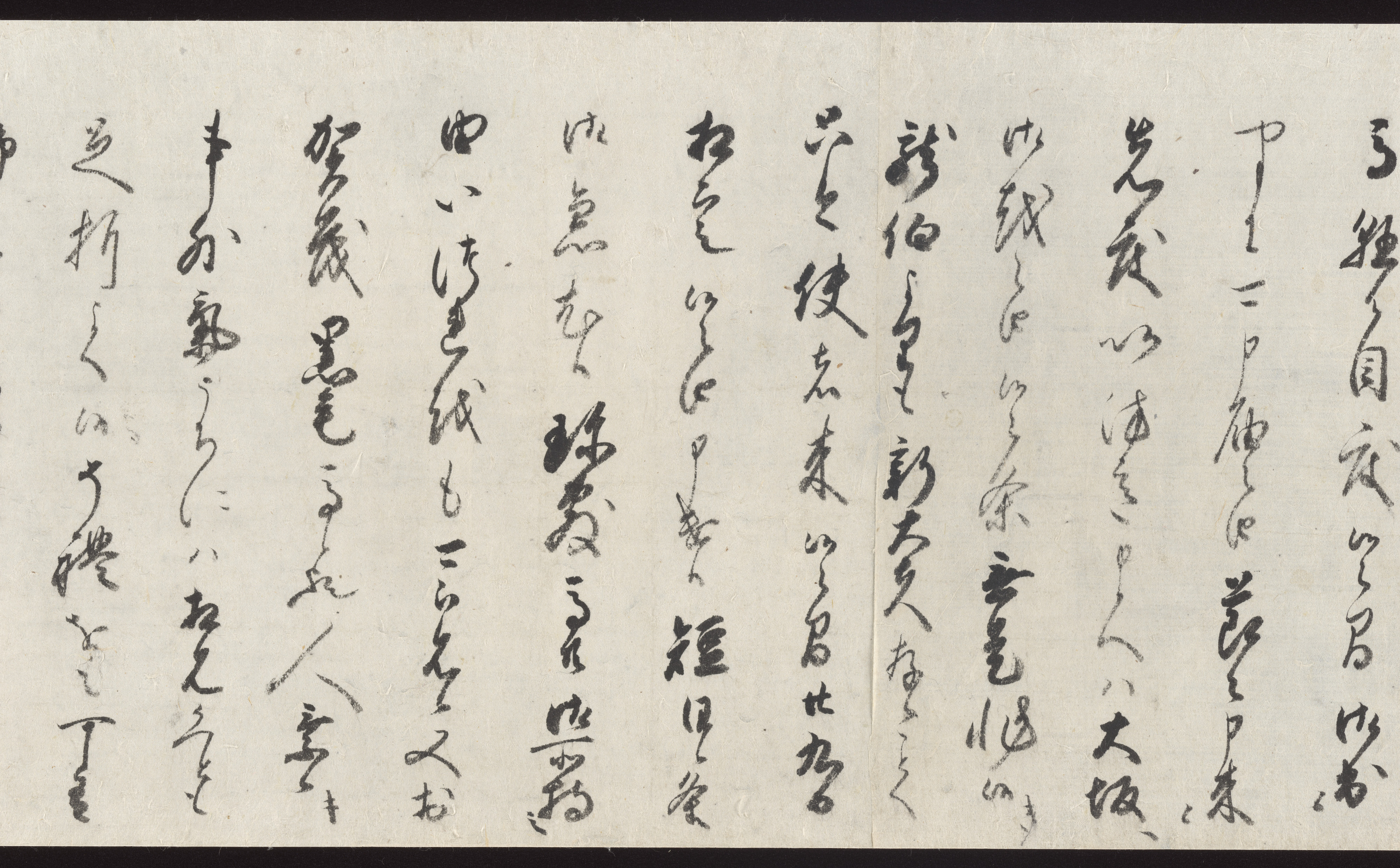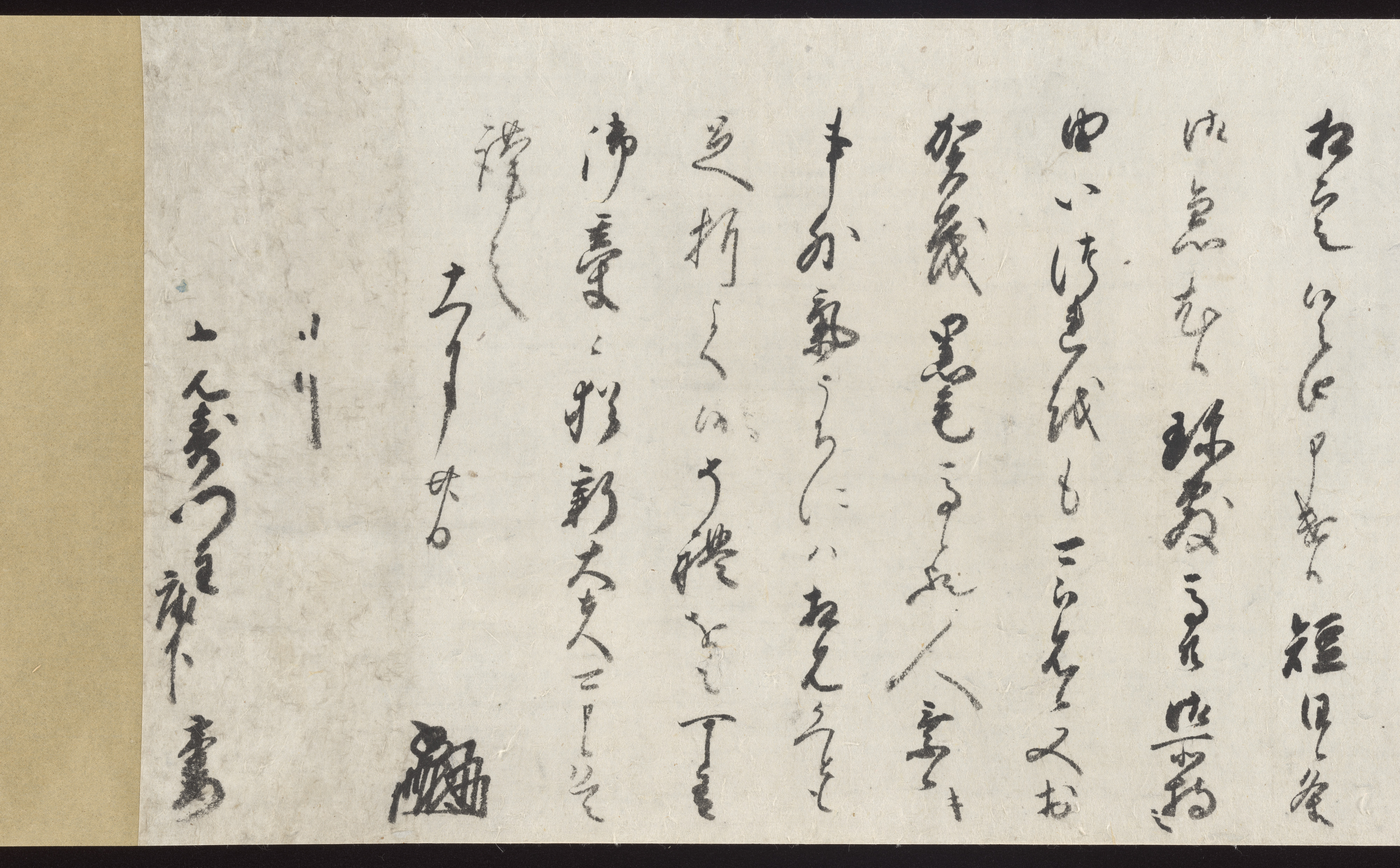Letter
Konoe Sakihisa Japanese
Muromachi period (1392–1573)–Momoyama period (1573–1615)
Not on view
This letter, written by the courtier and government official Konoe Sakahisa, is now mounted as a handscroll. Brushed predominantly in Chinese characters (kanji), in semi-cursive script, it concludes with Sakahisa’s handwritten seal (kaō), and three additional, brief lines, the leftmost of which may have been slightly cropped in the mounting process. Although originally intended for personal communication rather than as an object for display, the balance of the characters and variations in thickness and thinness of the brushstrokes and the density of the ink—with thinner, delicately flowing lines used for the Japanese syllabic characters (kana)—combine for an elegant visual effect.
Sakahisa, who lived from the final years of the Muromachi period through the short-lived but momentous Momoyama period, was a nobleman of major importance and a member of a branch of the illustrious Fujiwara clan. He had ties to both the imperial court and the warrior class and was active in political and military circles, holding several official posts, and became adoptive father to the country’s second "great unifier," the warlord Toyotomi Hideyoshi (1537–1598). Sakahisa’s son, Konoe Nobutada (1565–1614), was renowned as one of the great calligraphers of his time and labeled one of the Kan’ei Sanpitsu, or "Three Brushes of the Kan’ei era."
Due to rights restrictions, this image cannot be enlarged, viewed at full screen, or downloaded.
This artwork is meant to be viewed from right to left. Scroll left to view more.





